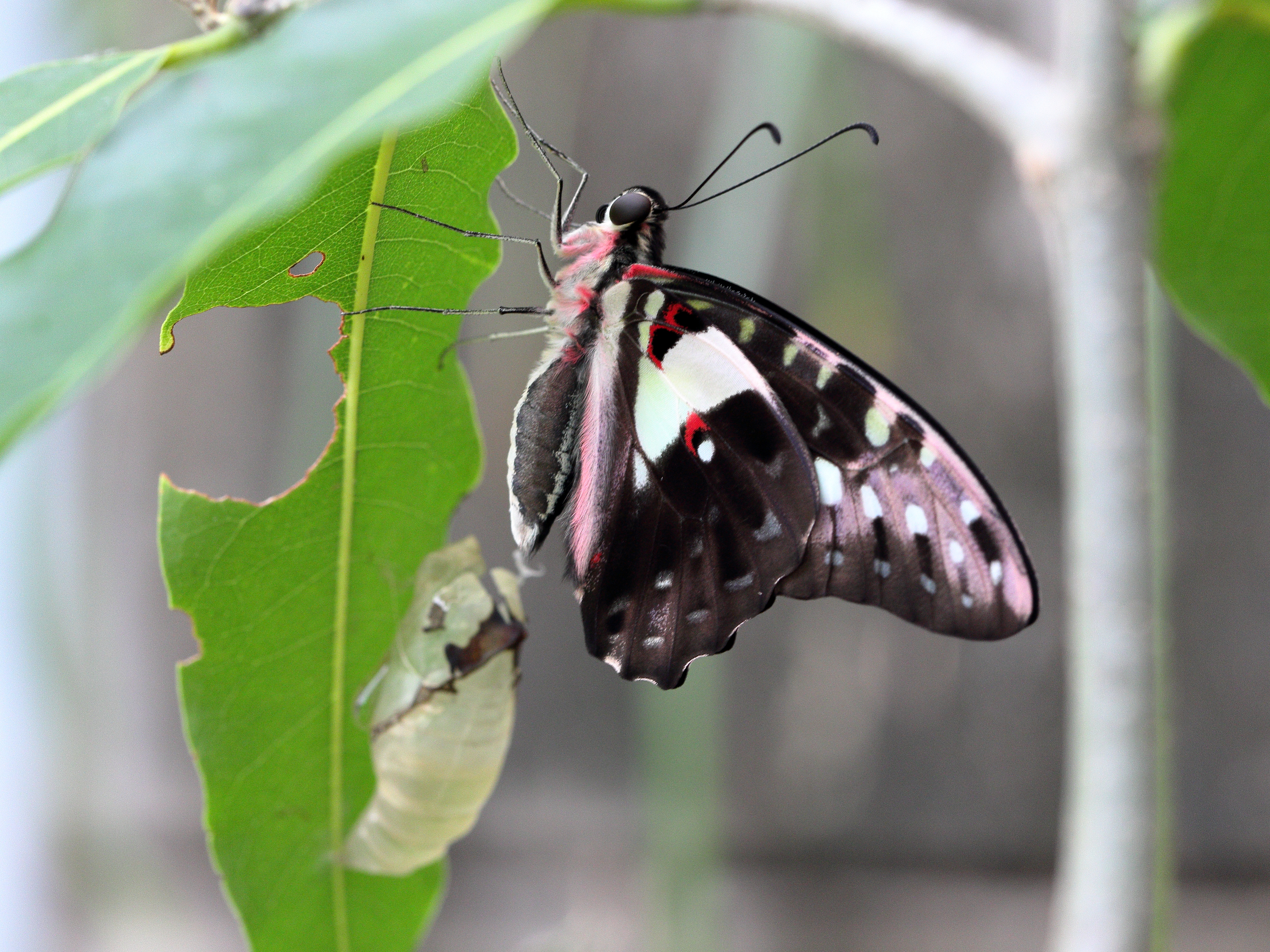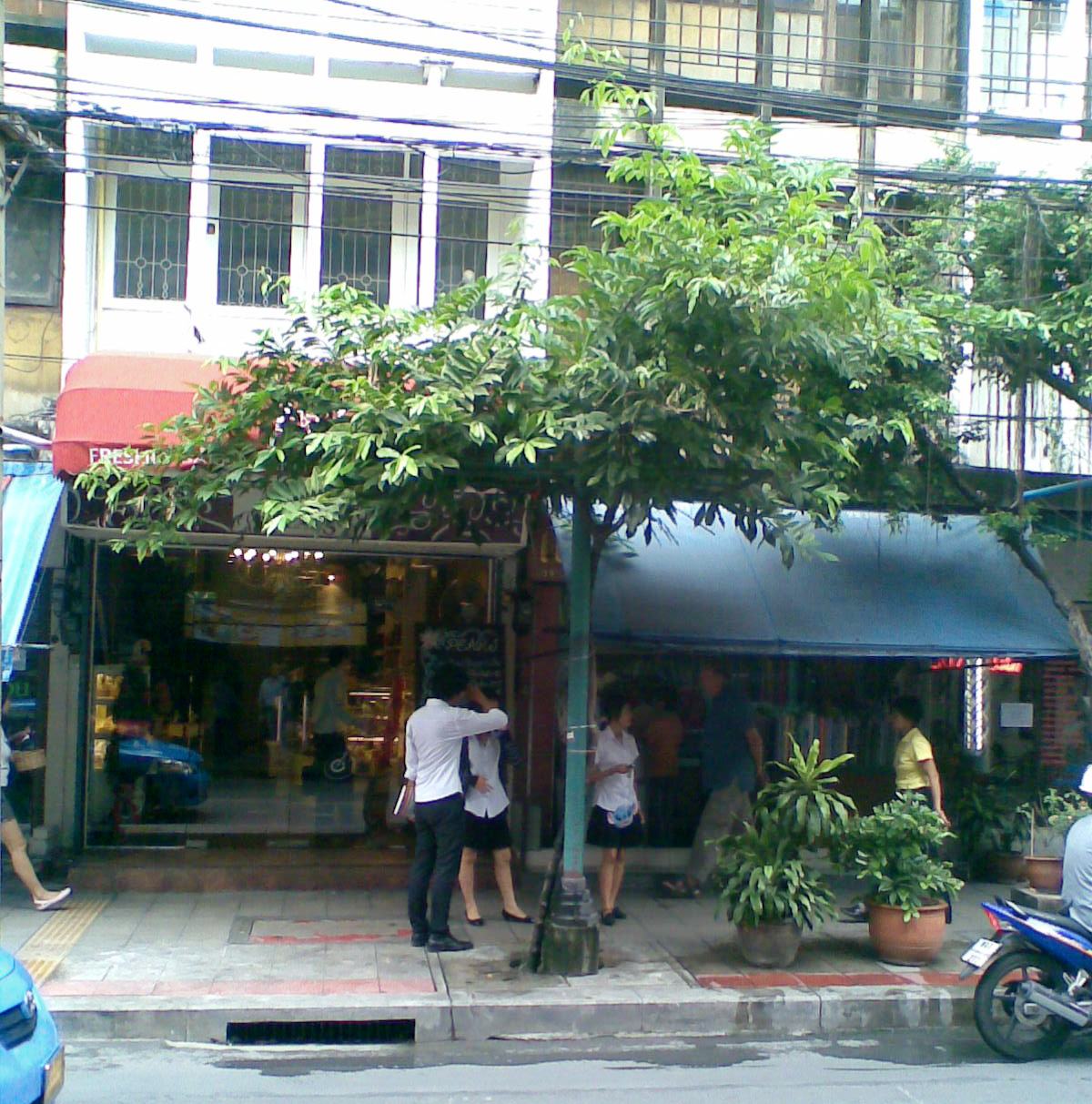|
Graphium Macfarlanei
''Graphium macfarlanei'', the green triangle butterfly or green triangle, is a butterfly of the family Papilionidae. It is found along the northern Gulf and north-eastern coast of Queensland, Australia; as well as on the Moluccas, New Guinea, Admiralty Islands and New Britain. The wingspan is about 70 mm. The larvae feed on '' Desmos'' species (including ''Desmos chinensis''), ''Annona muricata'' and ''Rollinia deliciosa ''Annona mucosa'' is a species of flowering plant in the custard-apple family, Annonaceae, that is native to tropical South America. It is cultivated for its edible fruits, commonly known as biribá, lemon meringue pie fruit, or wild sugar-apple ...''. Subspecies *''Graphium macfarlanei macfarlanei'' (Bachan, Ternate, Halmahera, Waigeu, Misool, Salawati, western Irian to Papua, north-eastern Australia) *''Graphium macfarlanei cestius'' (Fruhstorfer, 1903) (Buru, Ambon, Serang) *''Graphium macfarlanei seminigra'' (Butler, 1882) (New Britain, Ne ... [...More Info...] [...Related Items...] OR: [Wikipedia] [Google] [Baidu] |
Butterfly
Butterflies are insects in the macrolepidopteran clade Rhopalocera from the Order (biology), order Lepidoptera, which also includes moths. Adult butterflies have large, often brightly coloured wings, and conspicuous, fluttering flight. The group comprises the large superfamily (zoology), superfamily Papilionoidea, which contains at least one former group, the skippers (formerly the superfamily "Hesperioidea"), and the most recent analyses suggest it also contains the moth-butterflies (formerly the superfamily "Hedyloidea"). Butterfly fossils date to the Paleocene, about 56 million years ago. Butterflies have a four-stage life cycle, as like most insects they undergo Holometabolism, complete metamorphosis. Winged adults lay eggs on the food plant on which their larvae, known as caterpillars, will feed. The caterpillars grow, sometimes very rapidly, and when fully developed, pupate in a chrysalis. When metamorphosis is complete, the pupal skin splits, the adult insect climbs o ... [...More Info...] [...Related Items...] OR: [Wikipedia] [Google] [Baidu] |
Wingspan
The wingspan (or just span) of a bird or an airplane is the distance from one wingtip to the other wingtip. For example, the Boeing 777–200 has a wingspan of , and a wandering albatross (''Diomedea exulans'') caught in 1965 had a wingspan of , the official record for a living bird. The term wingspan, more technically extent, is also used for other winged animals such as pterosaurs, bats, insects, etc., and other aircraft such as ornithopters. In humans, the term wingspan also refers to the arm span, which is distance between the length from one end of an individual's arms (measured at the fingertips) to the other when raised parallel to the ground at shoulder height at a 90º angle. Former professional basketball player Manute Bol stood at and owned one of the largest wingspans at . Wingspan of aircraft The wingspan of an aircraft is always measured in a straight line, from wingtip to wingtip, independently of wing shape or sweep. Implications for aircraft design and anima ... [...More Info...] [...Related Items...] OR: [Wikipedia] [Google] [Baidu] |
Graphium (butterfly)
''Graphium'' is a genus of mostly tropical swallowtail butterflies commonly known as swordtails, kite swallowtails, or ladies. Native to Eurasia, Africa, and Oceania, the genus is represented by over 100 species. Their colouration is as variable as the habitats they frequent; from rainforest to savannah. Some possess tails which may be long and swordlike, while others lack any hindwing extensions. ''Graphium'' species are often sighted at mud puddles. The more colourful species are popular with collectors and are commonly seen mounted in frames for sale. Well-known species include the tailed jay (''Graphium agamemnon''), common bluebottle (''G. sarpedon''), and the purple-spotted swallowtail (''G. weiskei''). One species, '' G. idaeoides'', is notable for being a perfect mimic of the danainid ''Idea leuconoe''. Larvae feed variously on Annonaceae (most commonly), Magnoliaceae (commonly), Lauraceae (commonly), Rutaceae, Dioscoreaceae, Bombacaceae, Piperaceae, Anacardiaceae, ... [...More Info...] [...Related Items...] OR: [Wikipedia] [Google] [Baidu] |
Graphium Macfarlanei 4999
''Graphium'' may refer to: * ''Graphium'' (butterfly), a genus of mostly tropical swallowtail butterflies * ''Graphium'' (fungus), a genus of fungi in the family Microascaceae {{Genus disambiguation ... [...More Info...] [...Related Items...] OR: [Wikipedia] [Google] [Baidu] |
Rollinia Deliciosa
''Annona mucosa'' is a species of flowering plant in the custard-apple family, Annonaceae, that is native to tropical South America. It is cultivated for its edible fruits, commonly known as biribá, lemon meringue pie fruit, or wild sugar-apple, throughout the world's tropics and subtropics. Common names The Brazilian name, ''biribá'' has become somewhat well known. Nonetheless, the fruits are occasionally known by other names, including ''wild sugar apple'' and ''aratiku''. Description Biribá is a fast-growing, flood-tolerant, sun-loving tropical tree, with leaves up to 35 cm long. It can reach a height of , which can bear fruit from seed within 3 years. The fruit is large, conical or round, green when unripe, ripening to yellow. Its surface is covered with soft spines or protuberances which bruise and blacken with handling, giving it an unappealing appearance. This delicacy, together with a shelf life of less than a week, has limited its commercial cultivation. Howe ... [...More Info...] [...Related Items...] OR: [Wikipedia] [Google] [Baidu] |
Annona Muricata
Soursop (also called ''graviola, guyabano'', and in Hispanic America, ''guanábana'') is the fruit of ''Annona muricata'', a broadleaf, flowering, evergreen tree. It is native to the tropical regions of the Americas and the Caribbean and is widely propagated. It is in the same genus, '' Annona'', as cherimoya and is in the Annonaceae family. The soursop is adapted to areas of high humidity and relatively warm winters; temperatures below will cause damage to leaves and small branches, and temperatures below can be fatal. The fruit becomes dry and is no longer good for concentrate. With an aroma similar to pineapple, the flavor of the fruit has been described as a combination of strawberries and apple with sour citrus flavor notes, contrasting with an underlying thick creamy texture reminiscent of banana. Soursop is widely promoted (sometimes as "graviola") as an alternative cancer treatment, but there is no reliable medical evidence it is effective for treating cancer or an ... [...More Info...] [...Related Items...] OR: [Wikipedia] [Google] [Baidu] |
Desmos Chinensis
''Desmos chinensis'' is a flowering plant of the custard-apple family, Annonaceae. The yellowish-green flowers are similar to the Ylang-ylang flowers, therefore this plant is sometimes known as dwarf ylang-ylang. Their smell, however, is much less strong and is only felt in the morning. By midday it has mostly faded away. Description and habitat It is a vine or spreading shrub that may grow up to 4 m high if it finds an adequate support, otherwise it rarely grows taller than 150 cm. Its pollen is shed as permanent tetrads.Walker JW (1971) Pollen Morphology, Phytogeography, and Phylogeny of the Annonaceae. Contributions from the Gray Herbarium of Harvard University, 202: 1-130. ''Desmos chinensis'' is found throughout Southeast Asia from Nepal to the Philippines. It grows at the edge of forests in flat areas at elevations up to 600 m. It may grow as a ruderal plant on the sides of roads, rural causeways and other disturbed terrain. It thrives in slightly shady places. This ... [...More Info...] [...Related Items...] OR: [Wikipedia] [Google] [Baidu] |
Desmos (genus)
''Desmos'' is a genus of trees and shrubs in the plant family ''Annonaceae''. The genus consists of 27 species and 5 unresolved species. Selected species *''Desmos acutus'' (unresolved) *''Desmos cambodicus'' *''Desmos caudatus'' *''Desmos chinensis'' *''Desmos chryseus'' *''Desmos cochinchinensis'' *''Desmos costatus'' *''Desmos dinnensis'' *''Desmos dubius'' *''Desmos dumosus'' *''Desmos dunalii'' *''Desmos elegans'' *''Desmos elmeri'' *''Desmos goezeanus'' *''Desmos grandifolius'' *''Desmos hainanensis'' (unresolved) *''Desmos lecardii'' *''Desmos leucanthus'' *''Desmos macrocarpus'' Nguyên Tiên Bân, Bân *''Desmos mindorensis'' (unresolved) *''Desmos palawanensis'' *''Desmos pannosus'' (unresolved) *''Desmos pedunculosus'' (Alphonse Pyramus de Candolle, A.DC.) Nguyên Tiên Bân, Bân *''Desmos polycarpus'' *''Desmos praecox'' *''Desmos ramarowii'' *''Desmos saccopetaloides'' *''Desmos teysmannii'' (unresolved) *''Desmos tiebaghiensis'' *''Desmos viridiflorus'' *''Desmos ... [...More Info...] [...Related Items...] OR: [Wikipedia] [Google] [Baidu] |
New Britain
New Britain ( tpi, Niu Briten) is the largest island in the Bismarck Archipelago, part of the Islands Region of Papua New Guinea. It is separated from New Guinea by a northwest corner of the Solomon Sea (or with an island hop of Umboi the Dampier and Vitiaz Straits) and from New Ireland by St. George's Channel. The main towns of New Britain are Rabaul/Kokopo and Kimbe. The island is roughly the size of Taiwan. While the island was part of German New Guinea, it was named Neupommern ("New Pomerania"). In common with most of the Bismarcks it was largely formed by volcanic processes, and has active volcanoes including Ulawun (highest volcano nationally), Langila, the Garbuna Group, the Sulu Range, and the volcanoes Tavurvur and Vulcan of the Rabaul caldera. A major eruption of Tavurvur in 1994 destroyed the East New Britain provincial capital of Rabaul. Most of the town still lies under metres of ash, and the capital has been moved to nearby Kokopo. Geography New Britain e ... [...More Info...] [...Related Items...] OR: [Wikipedia] [Google] [Baidu] |
Family (biology)
Family ( la, familia, plural ') is one of the eight major hierarchical taxonomic ranks in Linnaean taxonomy. It is classified between order and genus. A family may be divided into subfamilies, which are intermediate ranks between the ranks of family and genus. The official family names are Latin in origin; however, popular names are often used: for example, walnut trees and hickory trees belong to the family Juglandaceae, but that family is commonly referred to as the "walnut family". What belongs to a family—or if a described family should be recognized at all—are proposed and determined by practicing taxonomists. There are no hard rules for describing or recognizing a family, but in plants, they can be characterized on the basis of both vegetative and reproductive features of plant species. Taxonomists often take different positions about descriptions, and there may be no broad consensus across the scientific community for some time. The publishing of new data and opini ... [...More Info...] [...Related Items...] OR: [Wikipedia] [Google] [Baidu] |
Admiralty Islands
The Admiralty Islands are an archipelago group of 18 islands in the Bismarck Archipelago, to the north of New Guinea in the South Pacific Ocean. These are also sometimes called the Manus Islands, after the largest island. These rainforest-covered islands form part of Manus Province, the smallest and least-populous province of Papua New Guinea, in its Islands Region. The total area is . Many of the Admiralty Islands are atolls and uninhabited. Islands The larger islands in the center of the group are Manus Island and Los Negros Island. The other larger islands are Tong Island, Pak Island, Rambutyo Island, Lou Island, and Baluan Island to the east, Mbuke Island to the south and Bipi Island to the west of Manus Island. Other islands that have been noted as significant places in the history of Manus include Ndrova Island, Pitylu Island and Ponam Island. Geography The temperature of the Admiralty Islands varies little throughout the year, reaching daily highs of and at night. ... [...More Info...] [...Related Items...] OR: [Wikipedia] [Google] [Baidu] |
New Guinea
New Guinea (; Hiri Motu Hiri Motu, also known as Police Motu, Pidgin Motu, or just Hiri, is a language of Papua New Guinea, which is spoken in surrounding areas of Port Moresby (Capital of Papua New Guinea). It is a simplified version of Motu, from the Austronesian l ...: ''Niu Gini''; id, Papua, or , historically ) is the List of islands by area, world's second-largest island with an area of . Located in Oceania in the southwestern Pacific Ocean, the island is separated from Mainland Australia, Australia by the wide Torres Strait, though both landmasses lie on the same continental shelf. Numerous smaller islands are located to the west and east. The eastern half of the island is the major land mass of the independent state of Papua New Guinea. The western half, known as Western New Guinea, forms a part of Indonesia and is organized as the provinces of Papua (province), Papua, Central Papua, Highland Papua, South Papua, Southwest Papua, and West Papua (province), West ... [...More Info...] [...Related Items...] OR: [Wikipedia] [Google] [Baidu] |

_male_in_flight.jpg)





